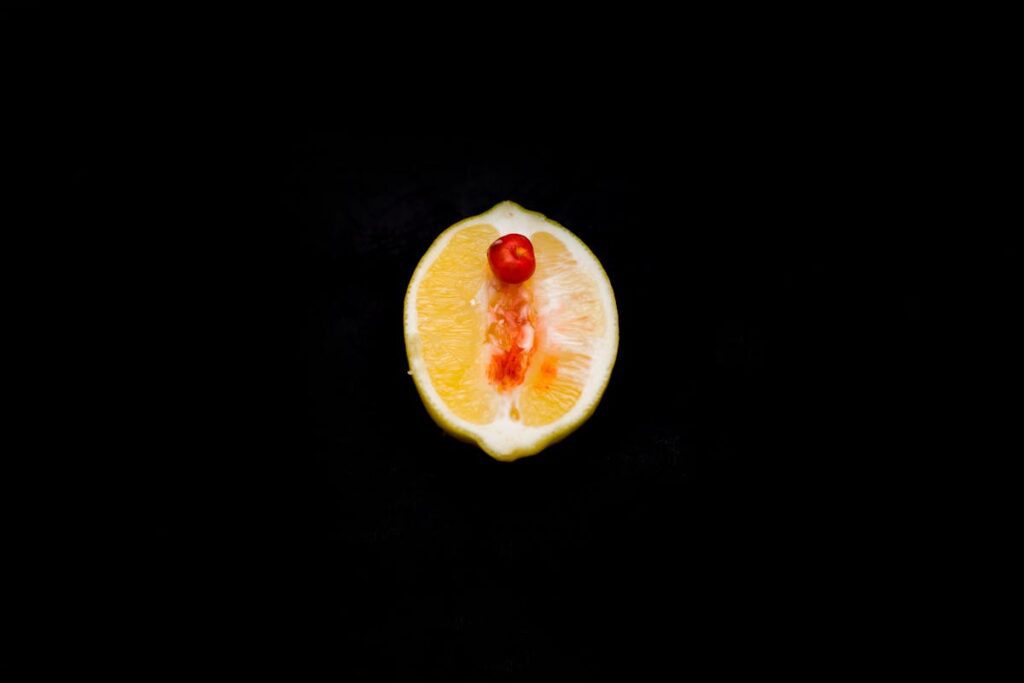

Fertile period: how to identify and control fertility


Arya Soleil
A period of time lasting about three to five days every month often leaves many women with their hormones “on edge.” We’re talking about the fertile period. Whether you’re trying to conceive or prevent an unplanned pregnancy, understanding how to calculate your fertile period is key to planning your next steps effectively.
While some couples seem to conceive effortlessly, others face individual factors that can complicate fertility. Regardless of one’s goal—whether expanding the family or not—monitoring women’s health is essential. This includes regular medical appointments, which help control existing conditions and prevent complications such as endometriosis, a condition that can interfere with fertility.
Considering the importance of this topic, let’s explore what the fertile period entails, the changes that occur during this phase, and how to calculate it, among other essential points.
What is the fertile period?
The fertile period refers to the timeframe when an egg is “available” for fertilization. In simpler terms, this is when ovulation occurs, typically lasting around five days—about 10 to 14 days after the first day of the menstrual cycle. Let’s break it down further.
A woman’s fertile life begins at puberty with menarche, the first menstruation, which generally occurs between ages 12 and 14 but can vary. From then on, the female body ovulates monthly, releasing an egg that can be fertilized. For a regular menstrual cycle of 28 to 30 days, ovulation typically happens between the 14th and 16th days, counted from the first day of the last menstruation.
What changes during the fertile period?
While every woman’s experience may differ, certain signs are common during the fertile period, including:
- Colorless vaginal secretion: A transparent discharge resembling raw egg whites often signals the approach of the fertile period. During this phase, the hormone estradiol increases, acting as a natural lubricant that aids sperm in reaching the vaginal canal.
- Appearance of pimples: Hormonal shifts during this period can make the skin more oily, leading to the development of pimples.
- Increased libido and appetite: Hormonal surges naturally heighten libido and appetite, making women feel more attractive during this phase.
- Emotional instability: Mood swings are also common, driven by the hormonal changes inherent to the fertile period.
How to calculate the fertile period
To calculate your fertile period manually, start by noting the first day of your last period and add 14 days to that date. Then, include the three days before and after this day to identify the approximately six-day window when fertility is highest.
For convenience, you can use a fertile period calculator available online or through mobile apps. These tools simplify the math and provide more precise results.
As for the most fertile day, this typically corresponds to the day of ovulation and the three days before and after. If unprotected sexual intercourse occurs during this period, the likelihood of fertilization significantly increases. For those planning pregnancy, this would be the ideal time to focus on conception and start learning about essential pregnancy-related topics, such as cesarean sections and postpartum care.
Does the use of contraceptives impact a woman’s fertile period?
For women using birth control pills or other contraceptives, it’s essential to understand how they affect the fertile period. These contraceptives typically contain hormones like progesterone and estradiol, which work by inhibiting ovulation. They also alter cervical mucus and the uterine lining, creating barriers that prevent sperm from reaching the egg.
Women who take contraceptives consistently and correctly do not ovulate, meaning they do not have a fertile period. Without the release of mature eggs, fertilization becomes nearly impossible, greatly reducing the chances of pregnancy.
Final Thoughts
While irregular menstrual cycles can complicate the calculation of the fertile period, understanding how your body changes throughout the month makes it easier to identify key stages. The more familiar you are with your body’s patterns, the better equipped you are to recognize significant indicators of fertility or infertility. Whether your goal is conception or prevention, knowledge is your most valuable tool.
Recommended Reads

- December 29, 2024
Check out 7 truths and myths about diet
Have you ever heard of some diet myths that...


- December 29, 2024
Is fasting really a good option? Check out the precautions of this eating style
Living in a society that is based on a...


- December 29, 2024
Start having healthy habits with these 7 benefits of a balanced diet!
If you want to live a quality life, you...


- December 29, 2024
Check out the list of 54 anti-inflammatory foods for your diet!
A balanced diet ensures all the nutrients possible for a routine...


- December 29, 2024
Find out how to cut back on sugar in your diet!
It’s very likely that at some point in your...


- December 29, 2024
What are the benefits of each vitamin in your body?
If your goal is to have a healthy routine and...

Fertile period: how to identify and control fertility

A period of time lasting about three to five days every month often leaves many women with their hormones “on edge.” We’re talking about the fertile period. Whether you’re trying to conceive or prevent an unplanned pregnancy, understanding how to calculate your fertile period is key to planning your next steps effectively.
While some couples seem to conceive effortlessly, others face individual factors that can complicate fertility. Regardless of one’s goal—whether expanding the family or not—monitoring women’s health is essential. This includes regular medical appointments, which help control existing conditions and prevent complications such as endometriosis, a condition that can interfere with fertility.
Considering the importance of this topic, let’s explore what the fertile period entails, the changes that occur during this phase, and how to calculate it, among other essential points.
What is the fertile period?
The fertile period refers to the timeframe when an egg is “available” for fertilization. In simpler terms, this is when ovulation occurs, typically lasting around five days—about 10 to 14 days after the first day of the menstrual cycle. Let’s break it down further.
A woman’s fertile life begins at puberty with menarche, the first menstruation, which generally occurs between ages 12 and 14 but can vary. From then on, the female body ovulates monthly, releasing an egg that can be fertilized. For a regular menstrual cycle of 28 to 30 days, ovulation typically happens between the 14th and 16th days, counted from the first day of the last menstruation.
What changes during the fertile period?
While every woman’s experience may differ, certain signs are common during the fertile period, including:
- Colorless vaginal secretion: A transparent discharge resembling raw egg whites often signals the approach of the fertile period. During this phase, the hormone estradiol increases, acting as a natural lubricant that aids sperm in reaching the vaginal canal.
- Appearance of pimples: Hormonal shifts during this period can make the skin more oily, leading to the development of pimples.
- Increased libido and appetite: Hormonal surges naturally heighten libido and appetite, making women feel more attractive during this phase.
- Emotional instability: Mood swings are also common, driven by the hormonal changes inherent to the fertile period.
How to calculate the fertile period
To calculate your fertile period manually, start by noting the first day of your last period and add 14 days to that date. Then, include the three days before and after this day to identify the approximately six-day window when fertility is highest.
For convenience, you can use a fertile period calculator available online or through mobile apps. These tools simplify the math and provide more precise results.
As for the most fertile day, this typically corresponds to the day of ovulation and the three days before and after. If unprotected sexual intercourse occurs during this period, the likelihood of fertilization significantly increases. For those planning pregnancy, this would be the ideal time to focus on conception and start learning about essential pregnancy-related topics, such as cesarean sections and postpartum care.
Does the use of contraceptives impact a woman’s fertile period?
For women using birth control pills or other contraceptives, it’s essential to understand how they affect the fertile period. These contraceptives typically contain hormones like progesterone and estradiol, which work by inhibiting ovulation. They also alter cervical mucus and the uterine lining, creating barriers that prevent sperm from reaching the egg.
Women who take contraceptives consistently and correctly do not ovulate, meaning they do not have a fertile period. Without the release of mature eggs, fertilization becomes nearly impossible, greatly reducing the chances of pregnancy.
Final Thoughts
While irregular menstrual cycles can complicate the calculation of the fertile period, understanding how your body changes throughout the month makes it easier to identify key stages. The more familiar you are with your body’s patterns, the better equipped you are to recognize significant indicators of fertility or infertility. Whether your goal is conception or prevention, knowledge is your most valuable tool.

Arya Soleil
More Topics


The Incredible Health Benefits of Cucumbers: Why This Hydrating Superfood Deserves More Attention

Is Eating Raw Food Really “Too Extreme”? Rethinking Health Before It’s Too Late

The Truth About Bacon: Is It Really Bad for You?

Why Grass-Fed Butter is Good for You

Top 4 Vitamins for Brain Health: Nourish Your Mind Naturally
Recommended Reads

- December 29, 2024
Check out 7 truths and myths about diet
Have you ever heard of some diet myths that...


- December 29, 2024
Is fasting really a good option? Check out the precautions of this eating style
Living in a society that is based on a...


- December 29, 2024
Start having healthy habits with these 7 benefits of a balanced diet!
If you want to live a quality life, you...


- December 29, 2024
Check out the list of 54 anti-inflammatory foods for your diet!
A balanced diet ensures all the nutrients possible for a routine...


- December 29, 2024
Find out how to cut back on sugar in your diet!
It’s very likely that at some point in your...


- December 29, 2024
What are the benefits of each vitamin in your body?
If your goal is to have a healthy routine and...

